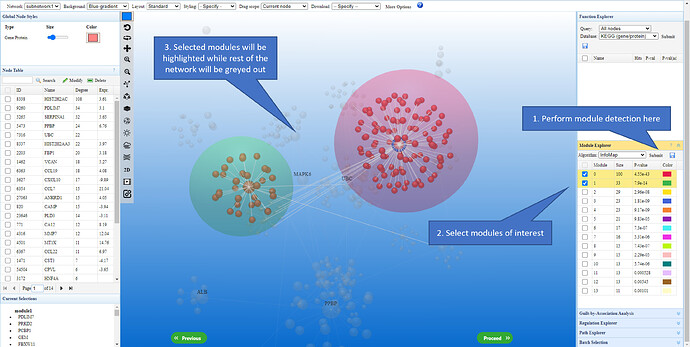The connections between nodes of a biological network are not random. Modules refers to parts of the network that have higher connections within than the average connections expected across the whole network. It is especially an important aspect of biological network as it can help identify nodes that are likely to participate in the same biological function as they are more likely to be tightly connected as a subgroup of the network.
OmicsNet currently uses three different module detection algorithms:
- WalkTrap exploits the idea that random walking tends to remain in a dense part of network which corresponds to a module.
- InfoMap algorithm joins neighbouring nodes into modules and these modules are further merged into supermodules using the map equation principle. The map equation minimizes the steps needed for random walker to describe a network by finding network modules.
- Label Propagation works by labeling nodes with unique labels at the initial step and, subsequently, nodes take the label that most of its neighbours have until a consensus label is reached for all nodes.
Below is an example of module analysis in 3D network:
